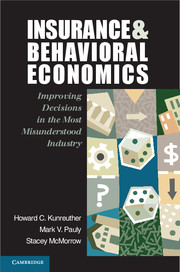Bibliography
Published online by Cambridge University Press: 05 February 2013
- Type
- Chapter
- Information
- Insurance and Behavioral EconomicsImproving Decisions in the Most Misunderstood Industry, pp. 295 - 308Publisher: Cambridge University PressPrint publication year: 2013

